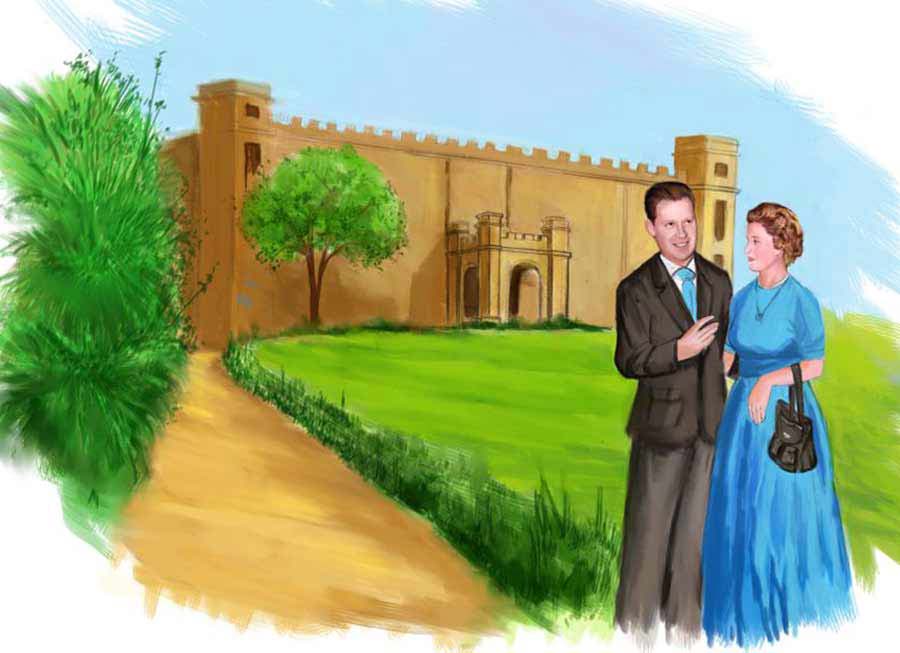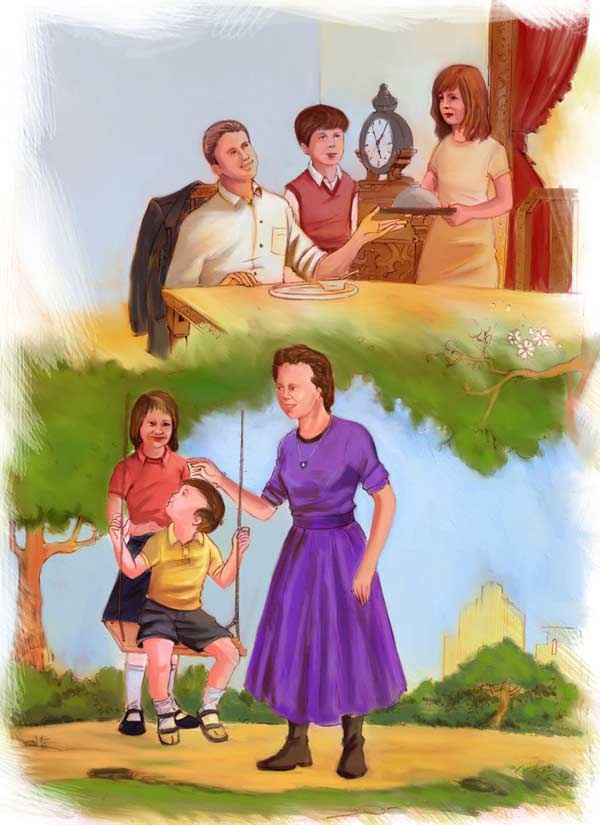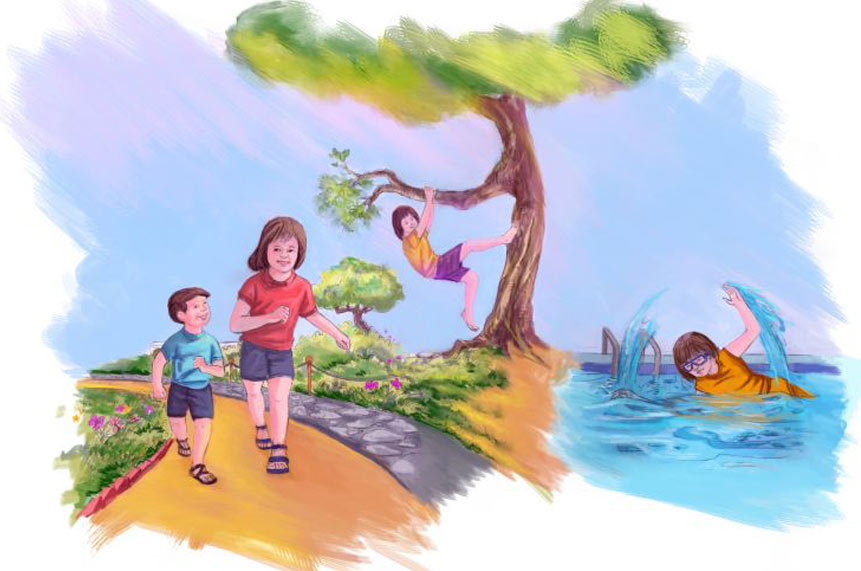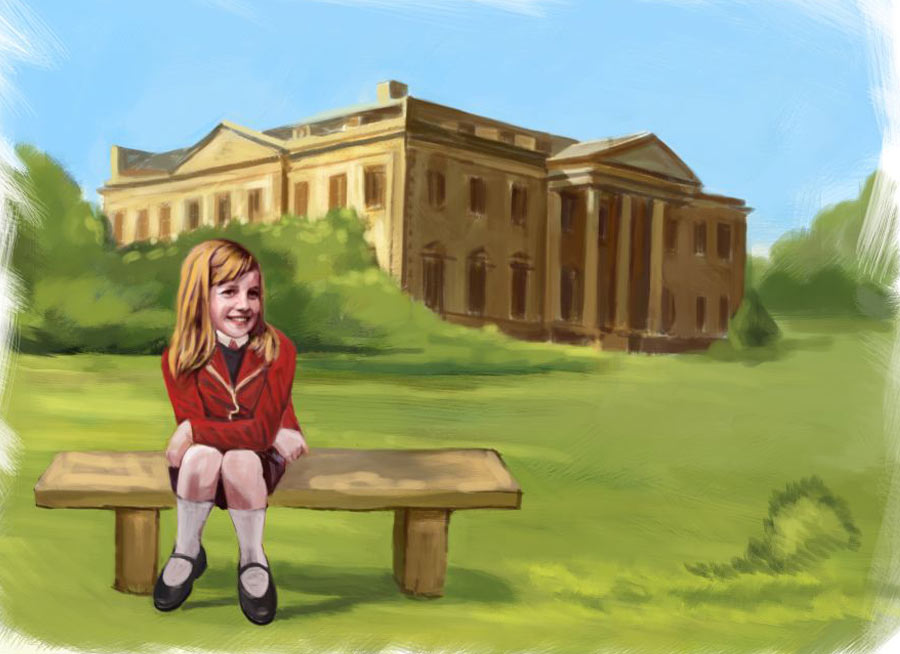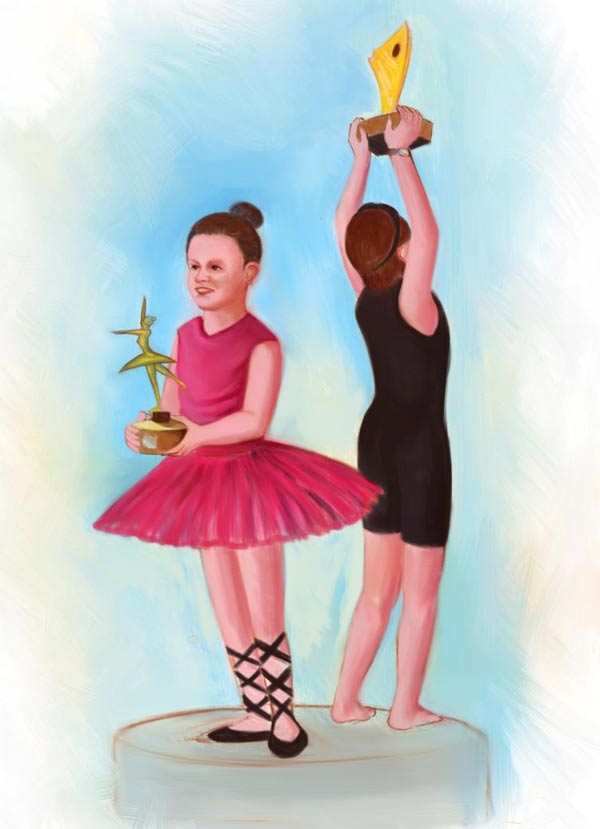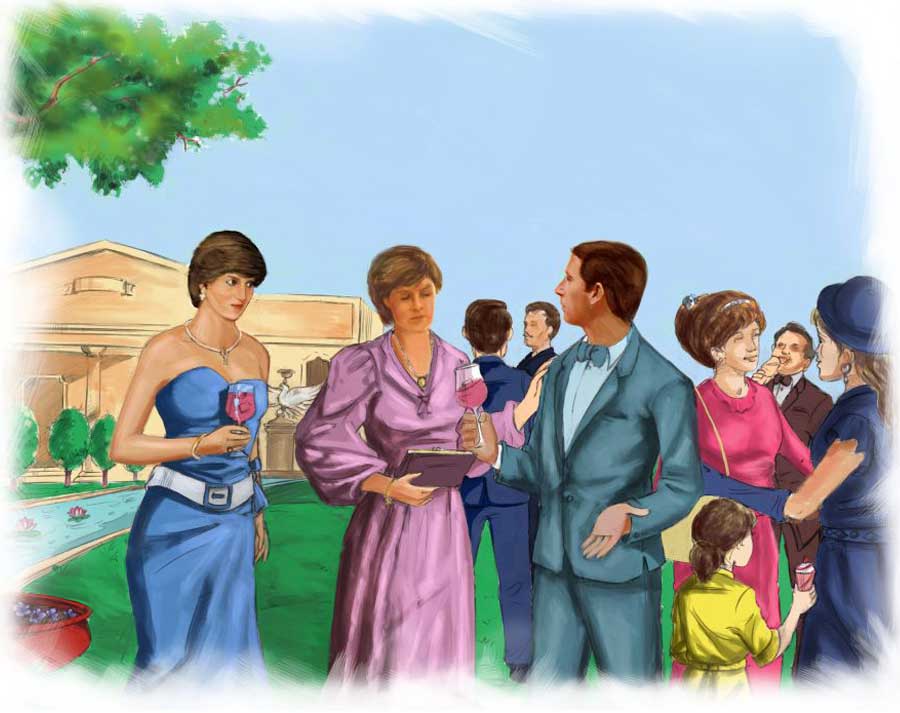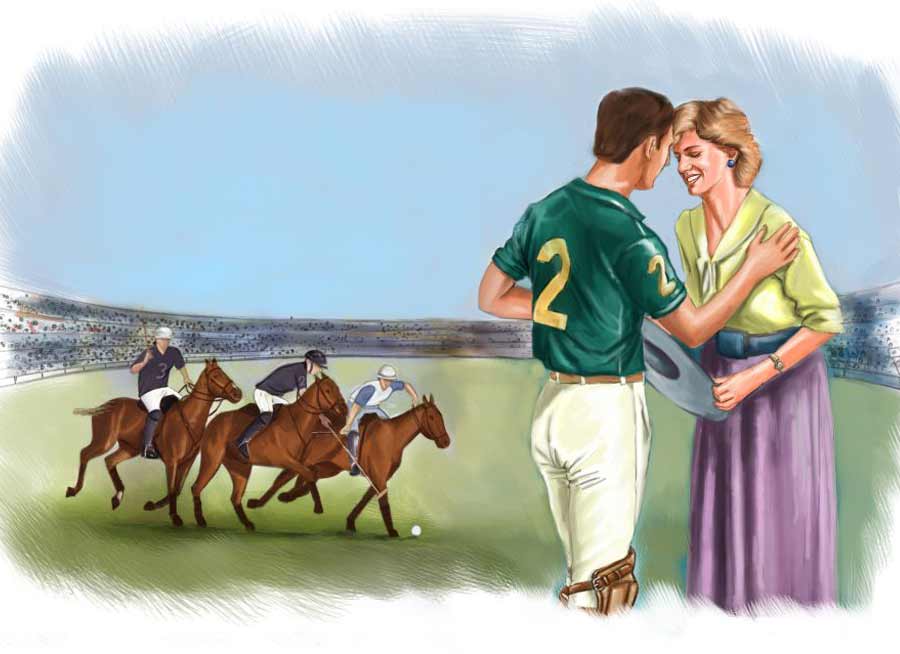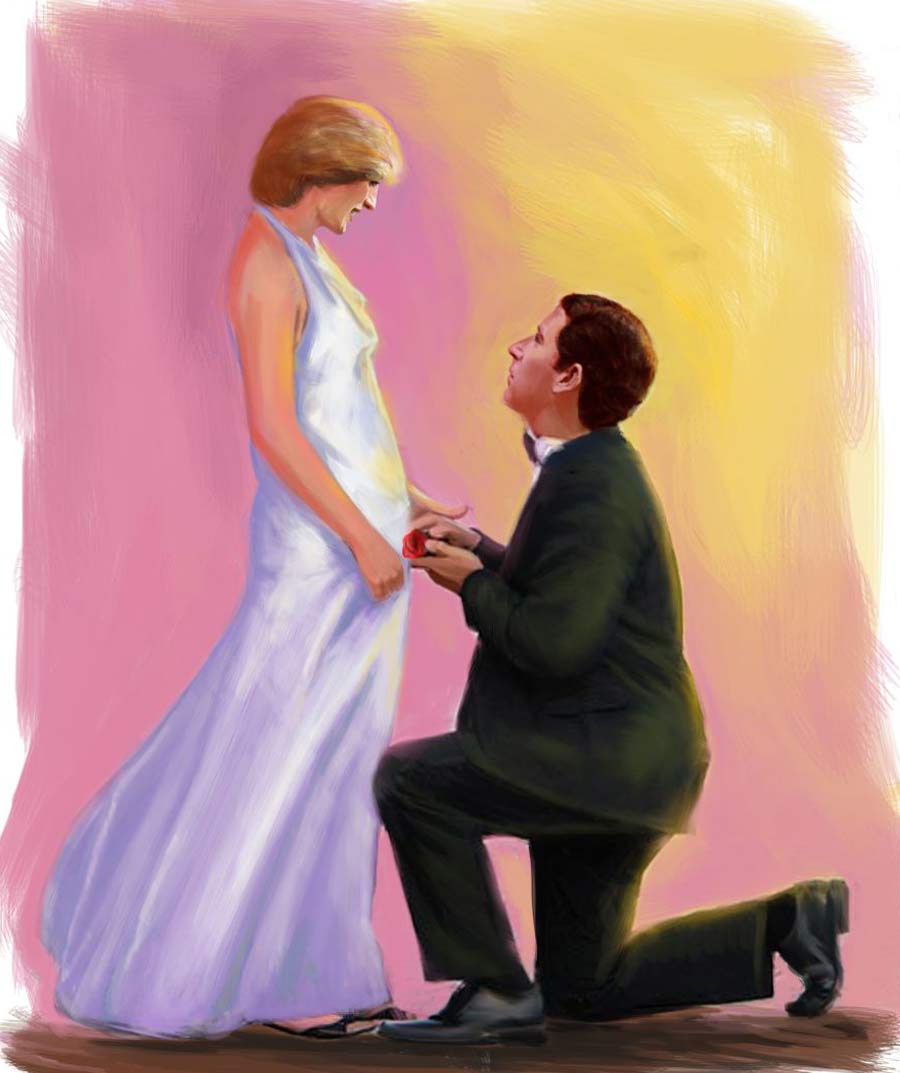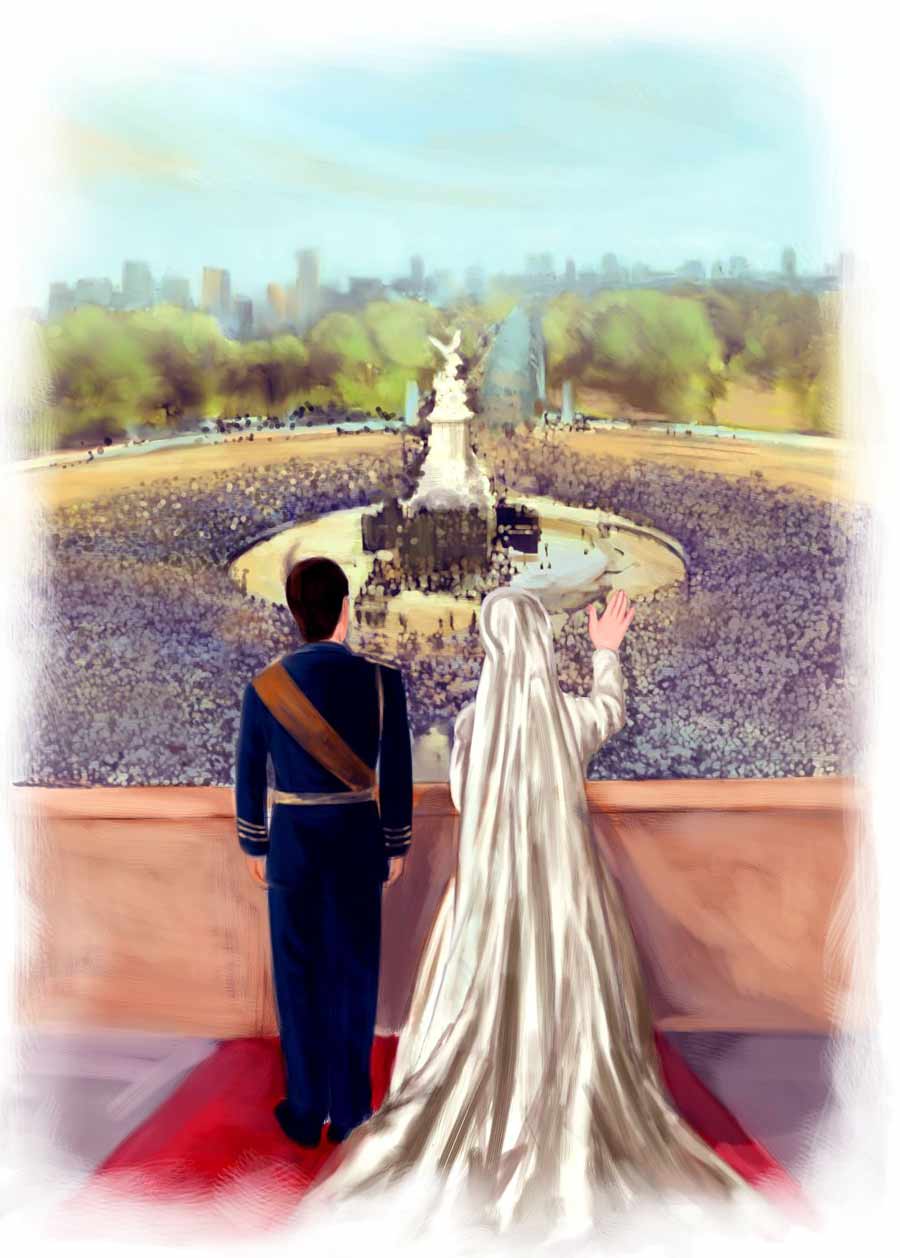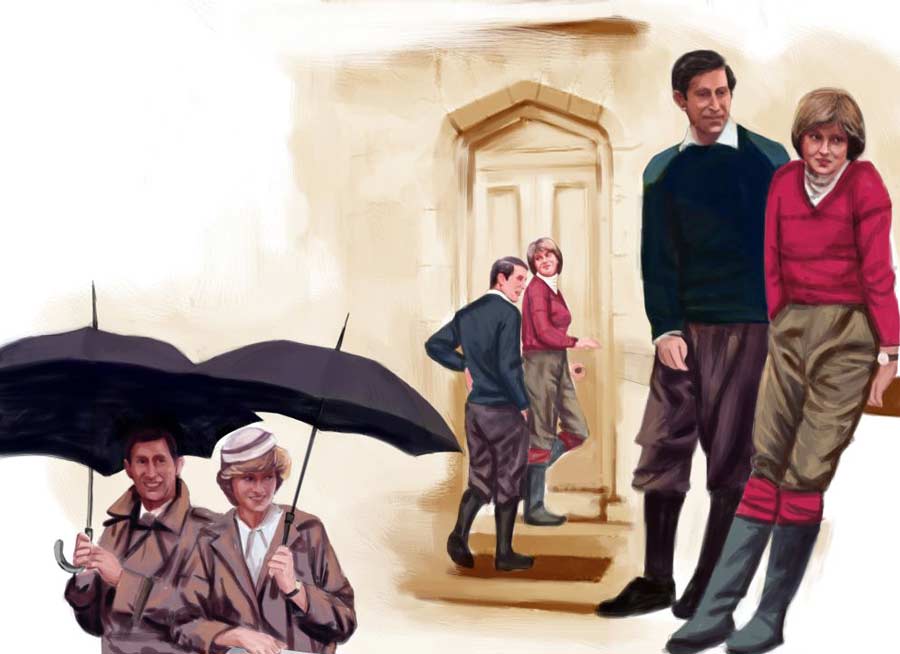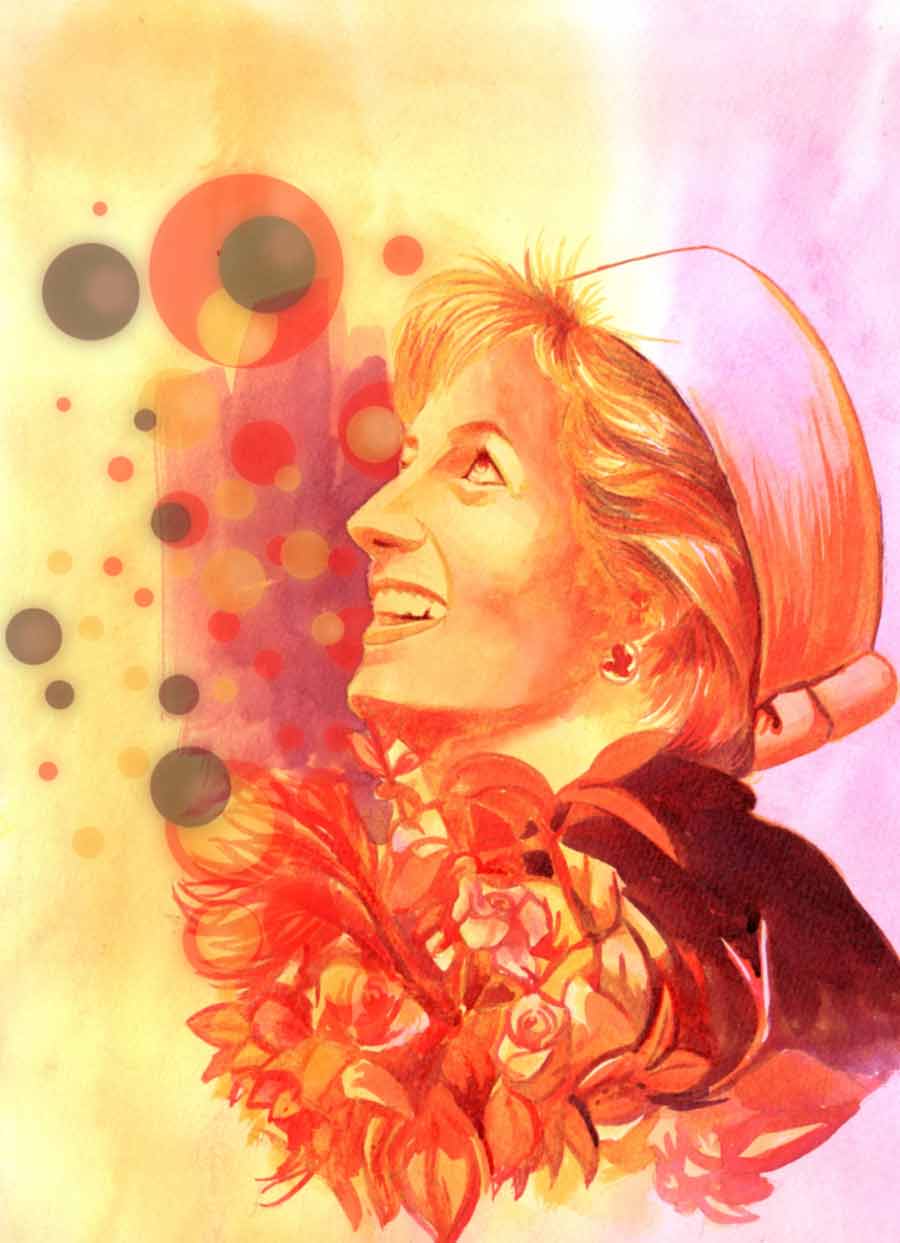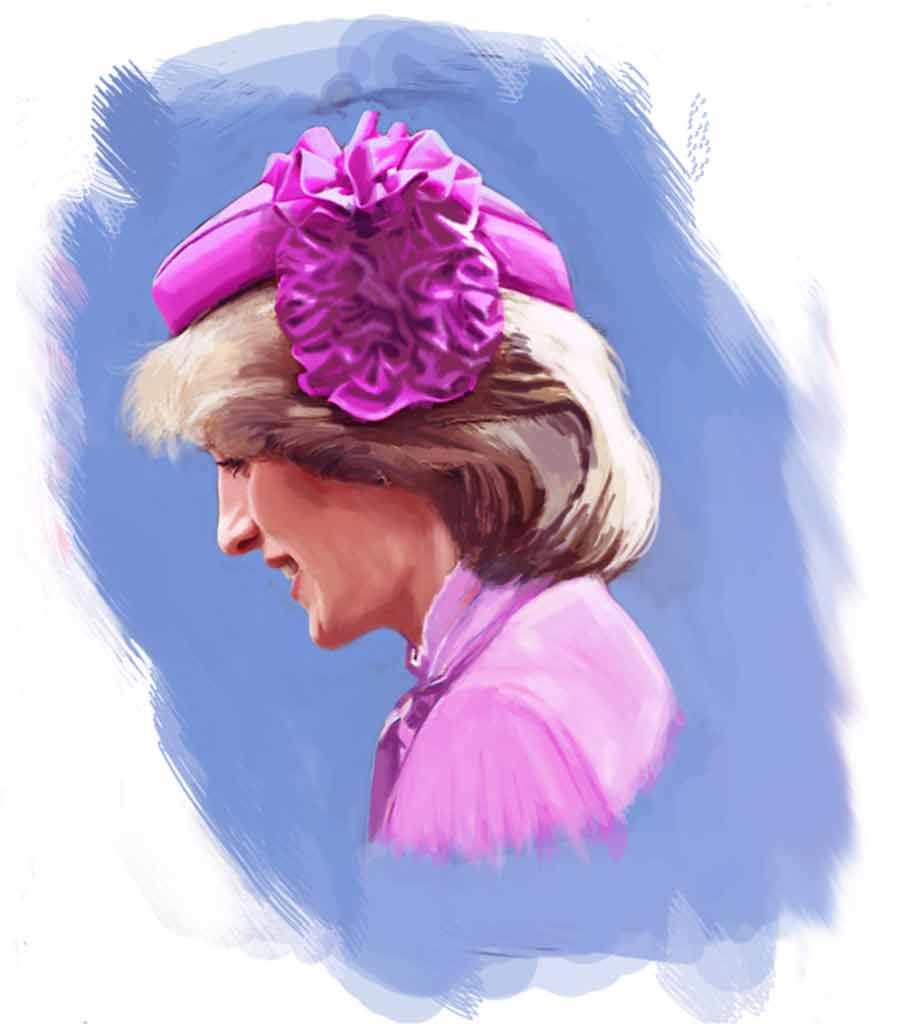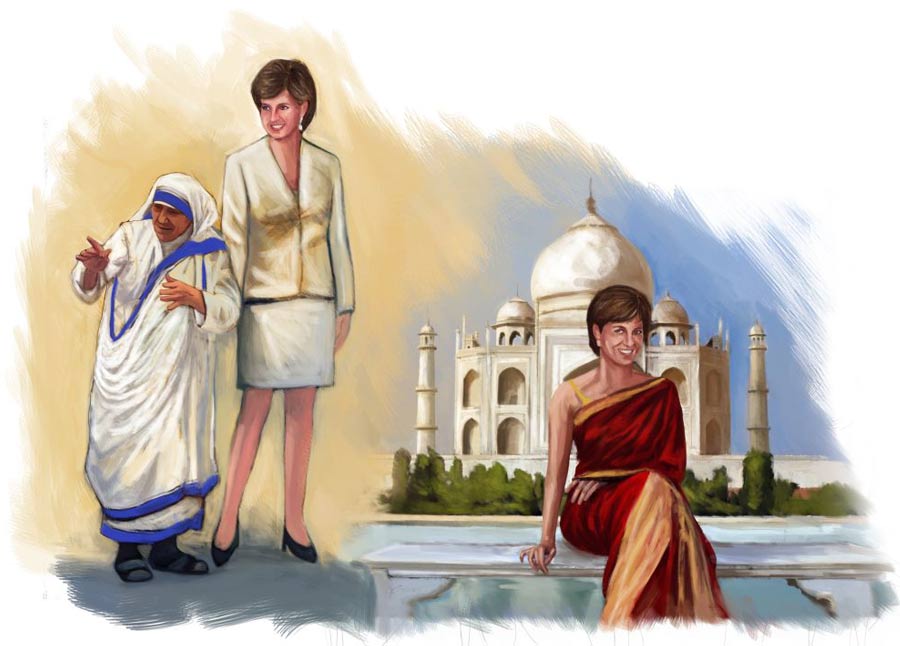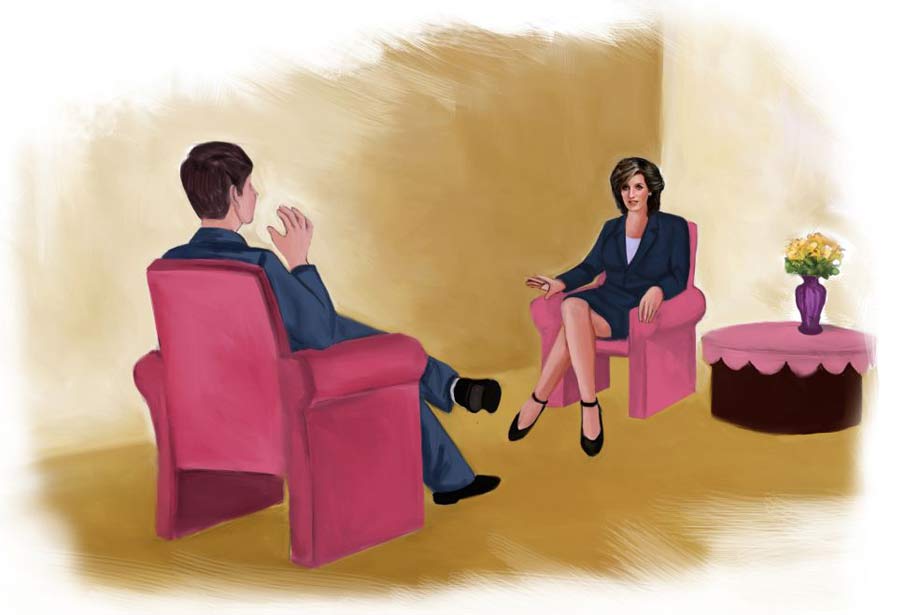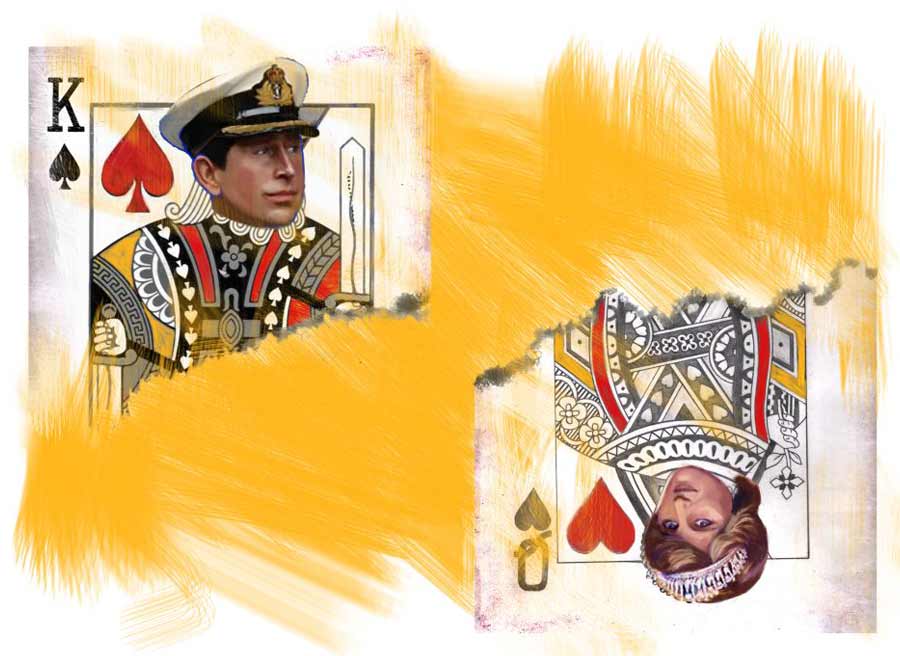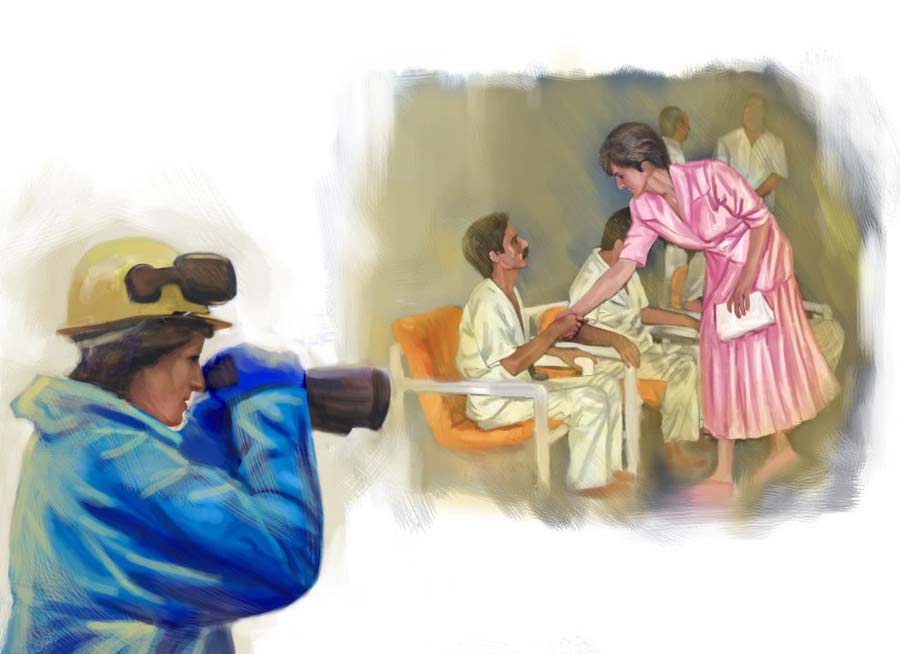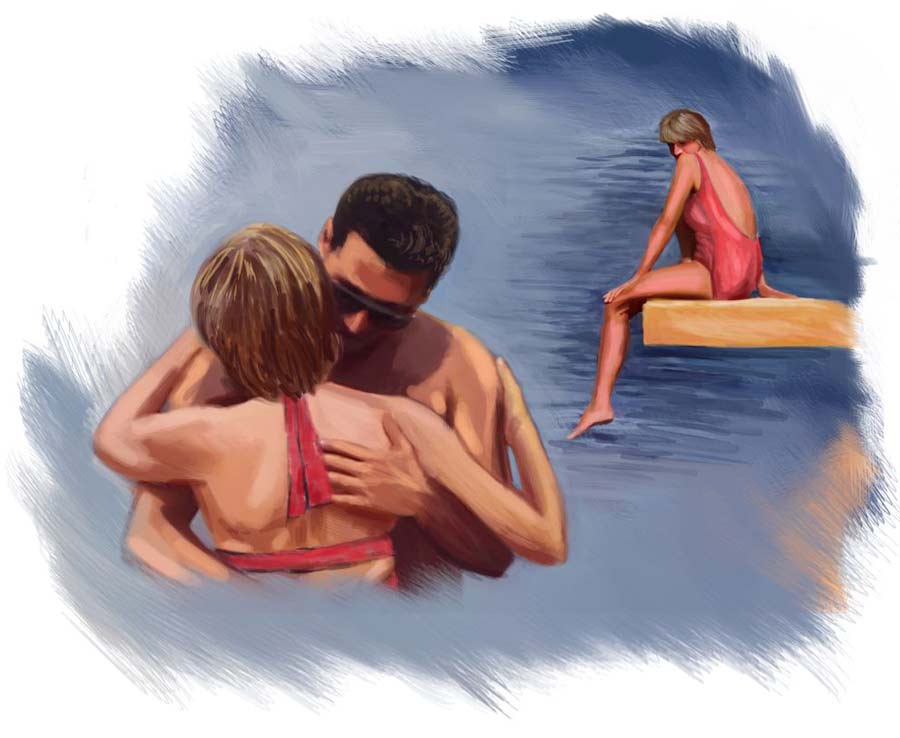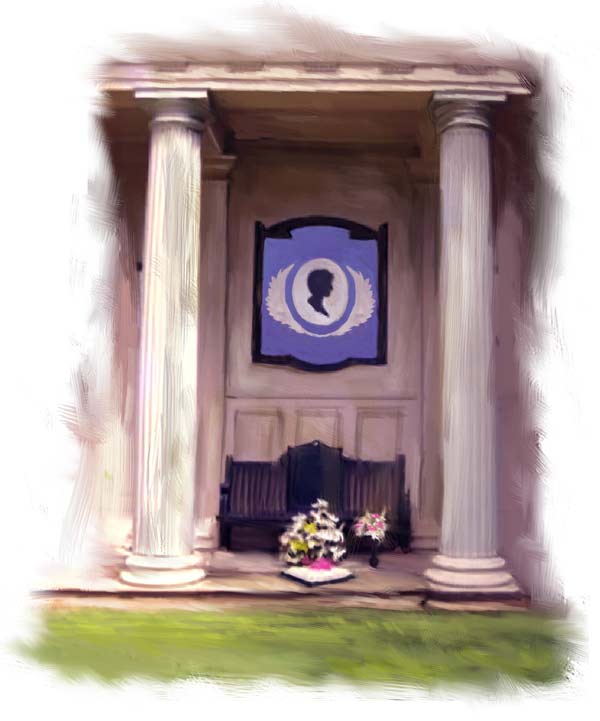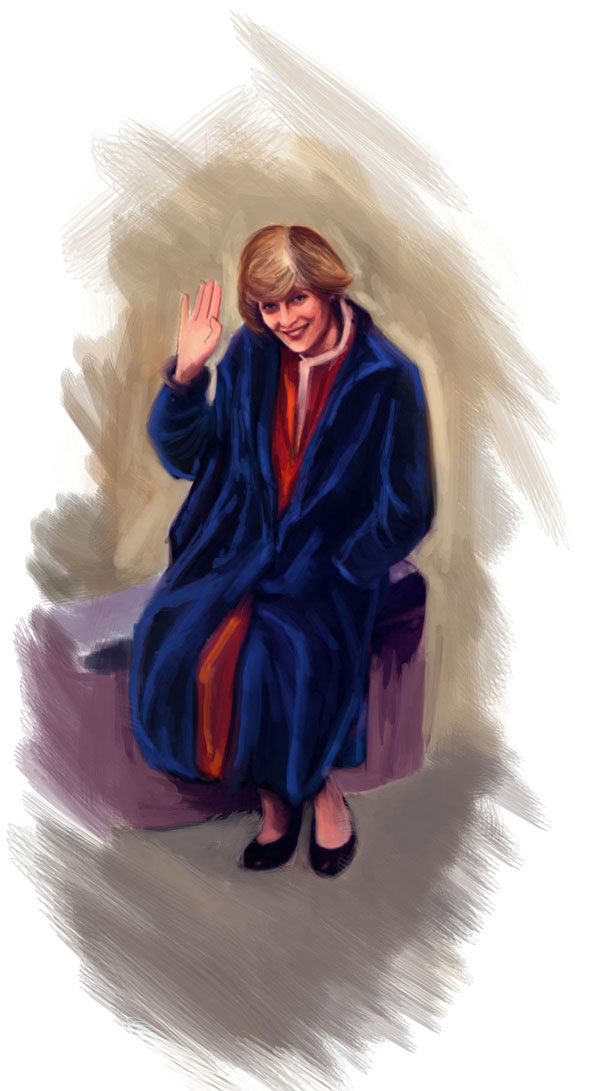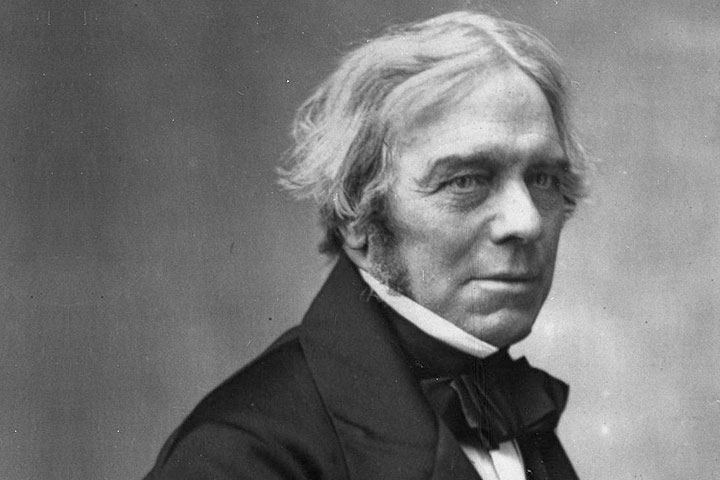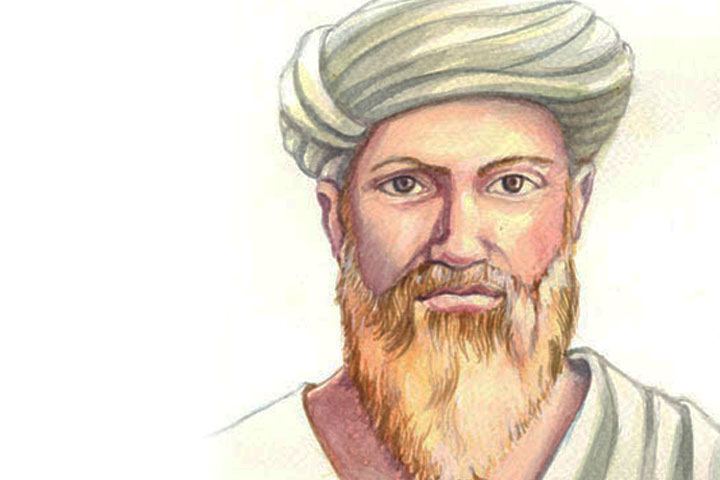
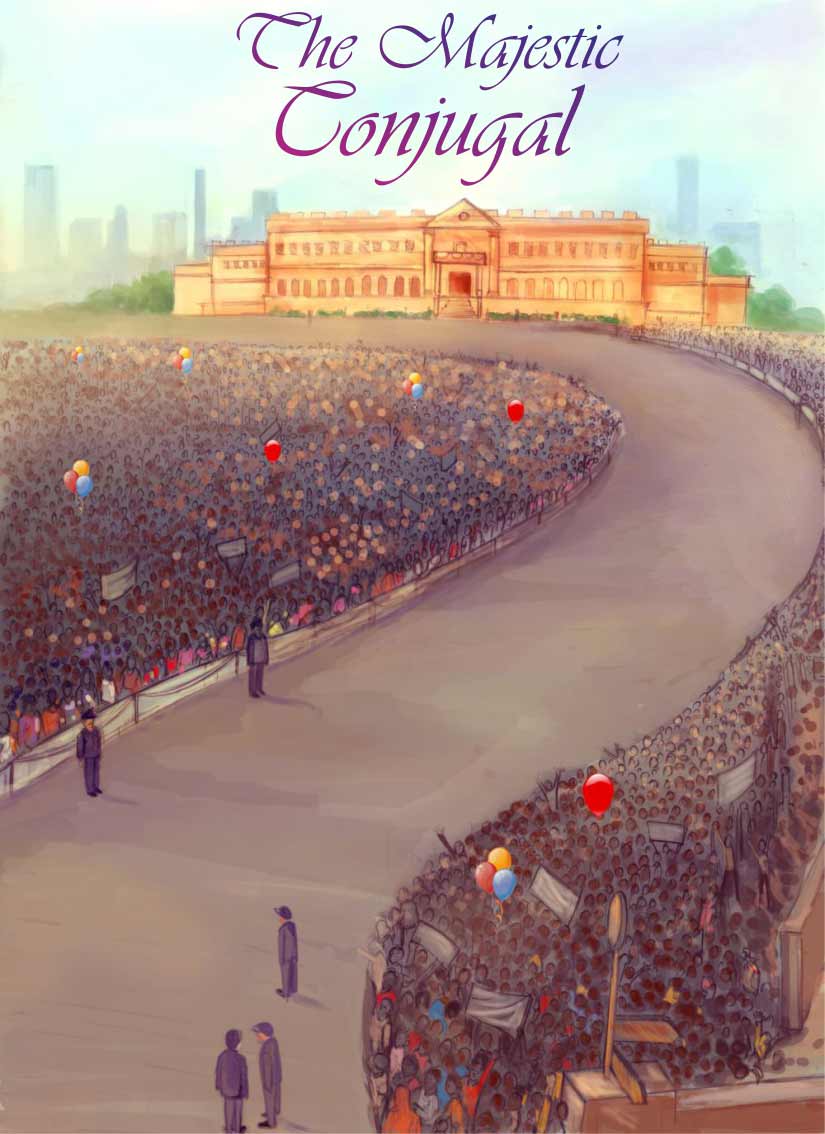
On 29th July, 1981, a Wednesday, the streets of London rejoiced to a royal wedding that is imprinted on the minds of the people till date. The Archbishop presiding over the wedding ceremony described it saying, “Here is the stuff of which fairytales are made of.” The media termed it the “Wedding of the century.” 750 million people around the globe were glued to their television sets to watch the blissful union of Prince Charles of Wales and Lady Diana Spencer. The day was not only about a royal marriage, but it also brought forward to the public eye, the most graceful, caring, controversial and remembered member of the royal family, Princess Diana.
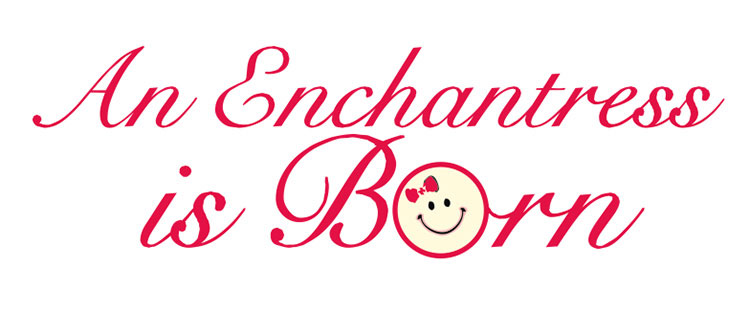
An Enchantress Is Born
The Spencers were the most respectable and one of the oldest aristocratic families of England. Edward John Spencer was the son of Albert Spencer, the 7th Earl of Spencer. He was the heir to the Althorp Estate and was referred as Viscount Althorp. On the other hand, Frances Ruth Roche was the daughter of the 4th Baron Fermoy, Edmund Roche and Lady Fermoy Ruth Roche. Frances was born in Park House, which was situated on the royal family’s Sardingham Estate. Park House was formerly used as the royal family’s guest house and was then leased to the Roche Family. Frances’ father was a friend of King George VI and her mother was the lady-in-waiting and a confidante to Queen Elizabeth I, the Queen Mother.
The young and beautiful Frances Ruth Roche married eligible bachelor Edward John Spencer on 1st June, 1954, in Westminster Abbey. The list of royal guests who attended the wedding included Queen Elizabeth Bowes Lyon (Queen Mother), her daughter Elizabeth II, Prince Philip and Princess Margaret. After their marriage, the couple was known as the Viscount and Viscountess of Althorp. Due to the good relations that the Roche’s shared with the royal family, Park House was later leased to the newly wed Spencer couple. As Frances was born and brought up in Park House, it created a deep connection for her to live there after getting married.
But all was not well in the marriage. Within a year of her marriage, Frances gave birth to her first child Sarah, on 19th March, 1955. The birth of a girl was not received well within the Spencer family, following which the marriage began to strain. The Spencer family was eagerly waiting for their heir to the Spencer estate, but the birth of a girl triggered a drift between the recently wed couple. Another year into the marriage and Frances was bearing good news for the second time. On 11th February, 1957, she gave birth to her second girl child, Jane Spencer. The birth only aggravated issues pertaining to conceiving an heir to the Althorp Estate. Years passed by, with the anxiety growing in the Spencer household. Three years after the birth of their second child, on 12th January, 1960, Frances gave birth to their first son, John. Unfortunately, John was born severely deformed and passed away within ten hours of his birth and the wait for the heir to the Althorp Estate continued. This death however shattered the Spencer family to a great extent, deepening the already formed gaps.
When Frances was 23, she was asked to visit clinics on Harley Street in London to find the exact problem of why she was unable to conceive a boy. The unjust experience scarred both, Frances as well as her marriage. At the age of 24, Frances was bearing good news for the fourth time. The family was eagerly awaiting a boy, but on 1st July, 1961, she gave birth to their third girl child. Frances gave birth to a healthy baby in the same room in Park House where she was born. The family had not considered any female names and hence after deliberating for a week, the name of a Spencer ancestress was decided upon. The girl was christened Diana Frances Spencer.
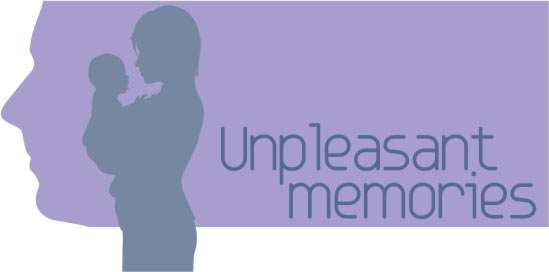
Unpleasant Memories
Diana’s mother, Frances was anxious for not being able to conceive a son. Her father, John Spencer loved Diana and his elder daughters, Sarah and Jane, but it was essential for him to be the father of a son who would carry forward the legacy of the Spencer family. In the years that followed Diana’s birth, the tension between the couple began to create a rift between them, but then luck knocked on their door. This was the fifth time Frances was bearing good news. Three years after Diana’s birth, the wait for a son was finally over and on 20th May, 1964, Frances gave birth to the heir of the Anthrop Estate, Charles Spencer.
But even after the long cherished desire for the heir was fulfilled, the cracks in Frances and Edward John Spencer’s marriage could not be filled as it had reached the state of no repair. The couple was unable to recover from the disgrace of Frances being asked to visit numerous clinics. The marriage now consisted of John Spencer’s stone cold silences and tears dropping down Frances’s eyes. According to Diana’s brother, Charles Spencer, “It was a dreadful time for my parents and probably the root of their divorce because I don’t think they ever got over it.” Charles Spencer described this experience as ‘humiliating’ for his mother. While the psychological scars of being unable to provide an heir had slowly distanced the couple from each other, Frances Spencer got involved with Peter Shand Kydd. He was a wealthy and attractive wallpaper tycoon with a carefree attitude. If compared in personality and temperament, Peter Shand Kydd was a complete contrast to Edward John Spencer who was a very reserved and introvert person. Due to his affectionate nature, Peter Shand Kydd shared a very relaxed relationship with Frances’ children.
Diana was only six when she saw the marriage of her parents crumble. The affair between her mother and Peter Shand Kydd led to Frances moving out of the family home in 1967. This was one of the first episodes that scarred Diana’s memory. Diana always recalled, her father putting away her mother’s suitcases in the trunk of the car while her mother’s feet clutched the gravel, the sound of the car door being shut and then her mother driving away, and in a way fading from her life. After Frances moved out, the acrimonious custody battle began. Normally, the custody of the children would typically be ruled in favour of the mother, but in cases of noble and influential heritage like that of Edward John Spencer, it was ruled in favour of the father. Diana’s mother was portrayed as a villainous individual for leaving her husband and children, and Edward John Spencer won the custody of the children.
Though having two elder siblings, Diana missed the presence of a maternal figure in her life. Due to her parents’ tumultuous marriage and Frances moving out, she did not see her mother as much as she would have liked. Sarah and Jane were six and four years elder to her respectively. When Diana was prepared to handle the domestic responsibilities, her sisters were sent off to boarding school. While her elder sisters were at boarding school, Diana and her brother Charles were shuffled between the two parents, which created a sense of familial instability in their lives.
They spent half of their vacations with their mother and the other half with their father. In an attempt to win the children over, the parents would shower them with materialistic gifts. The gifts they received from their parents also caused a dilemma for the tiny tots as they were to be very careful not to display favouritism.
During the troubled times of their parents’ marriage, the bond between Diana and her brother Charles deepened. A young six year old girl evolved into a warm, maternal and affectionate Diana. With her father coping with the trauma of the broken marriage, young Charles and Diana were left to care for themselves. Afraid of the night, Diana would be rattled by the slightest squeak or the sound of the winds whistling. She would hear her brother crying, “I want mummy,” but would be unable to muster up the courage to walk out of the door to soothe her weeping brother. Diana would then bury her face in the pillows and put herself to sleep. She recalled these memories of her childhood time and again which further created anxieties and guilt in her mind.
During the troubled times, Park House was an integral part of the Spencer childhood and Diana loved it. She loved walking in the lush gardens, playing with her small pets, climbing trees and swimming in the outdoor pool.
Park House displayed an outgoing streak of her personality which at times was camouflaged under her shy and caring persona. She came from a privileged background and living in Park House gave her the opportunity to be acquainted with the royal family and being playmates with Prince Andrew and Edward, Prince Charles’s younger brothers.
Approximately two years after her mother moved out, in the April of 1969, Diana’s parents divorced. At the age of seven, she saw the marriage of her parents come to an end. A month later on May 2, 1969, Diana’s mother married Peter Shand Kydd. In the years that followed, Diana and her siblings grew very fond of their stepfather. He would interact with them and take them sailing. He called Diana, “The Duchess” a nickname many of her friends later used to refer to her.
The same year she was enrolled at the Silfeild day school. As a young girl, Diana always felt she was different as she belonged to a family of a broken marriage.
Her parents were divorced and in the late 1960’s, not many knew of people who were divorced. All this created aloofness in her mind.
Diana’s nanny recalls her saying, “I will never marry unless I’m really in love because if you’re not in love, you’re going to get divorced and I never intend to be divorced.”
By the September of 1970, Diana was sent to the boarding school, Riddlesworth, in Norfolk. With Diana’s growing interest in swimming, ballet and riding, Riddlesworth was the institution that would provide her the opportunity and platform to excel.
Apprehensive at first, the nine year old Diana melded in beautifully. On the exterior she would look quiet and shy, but she was just like any other lively young student. Diana shied away from grasping too much attention, which became evident when she agreed to appear in a school play only if she’d have nothing to speak.
On 9th June, 1975, the Spencer family faced another misfortune. Diana was 13 when her grandfather, Albert Spencer expired. After the death of her grandfather, Diana’s father Edward John Spencer was named the 8th Earl of Spencer. The family then moved from the childhood home Park House to the sixteenth century ancestral home in Althorp. As Edward John Spencer was titled Earl, his son would be called ‘Viscount Althorp’ and the daughters were to be called ‘Lady’. Diana was now called “Lady Diana.”
A year later, on 14th July, 1976, Diana’s father Earl Spencer married Raine McCorquodale, Countess of Dartmouth and daughter of the romance novelist Barbara Cartland. Raine was not accepted with open arms by Diana and her siblings. With fluffed up hairdos and an elaborate smile, she epitomized the figure of somebody with outspoken opinions and sharp communicational abilities. 15 year old Diana and her stepmother shared a very strained relationship and she and her siblings nicknamed her “Acid Raine.”
By July 1977, Diana finished her schooling at West Heath secondary school. She was not a very bright student academically, but excelled tremendously in ballet and swimming. She won many swimming cups and could dive into a pool, barely creating a ripple. She also had an inclination and longing towards being a ballerina, but standing tall at 5 feet 10 ½ inches, her height did not favour her dreams. It was at West Heath secondary school, that Diana’s instinctive and affectionate approach towards people’s suffering was first discovered. Her warmth and instant rapport with patients concealed the crack of her own personal affliction and provided her with a sense of contentment and gratification.

The Acquaintance Apexes
This very small acquaintance was the beginning of the fairytale that was about to unravel in Diana’s life. Prince Charles took notice of Diana for the first time in the November of 1977, at a shooting party in Althorp, the Spencer estate in Northamptonshire. Diana was 16 when she first met Prince Charles. He was dating Diana’s elder sister Lady Sarah at that time. The ‘Time’ newspaper reported Prince Charles describing Diana as “a very amusing and jolly and attractive 16-year-old.”
Prince Charles and Lady Diana did not meet again for a couple of years. Diana was then sent off to the Institute AlpinVidemantte, in Rougemonte, Switzerland. Diana showed interest in sports and singing. She returned to London in 1979. At the age of 18, she had now moved to South Kensington where she shared an apartment with three roommates. Diana worked with children as an assistant at the Young England Kindergarten. Her ability to empathize made her an instant hit with the children, leading to an increase in the number of hours she worked. She also worked as a nanny to the son of an American businesswoman. Diana recalled the interactions with her roommates, the spinster life of driving through the city, the fun and laughter as the very happy moments of her life.
Diana had now blossomed into a fine young lady and lived a very independent life. Charles, the heir to the royal throne, on the other hand, was a sought after groom who had travelled around the world, posing for pictures in many different uniforms. He had completed his education from Cambridge and was serving in the Royal Navy and Air Force. The royal family was eager for the prince to find a bride. The prince was now in his thirties and the pressure on him to settle down was enormous. Charles was involved in affairs with a number of women which included the daughter of the British Ambassador to Spain, Georgiana Russell, Lady Jane Wellesley, actress Susan George, Princess Diana’s elder sister Lady Sarah Spencer, Princess Marie-Astrid of Luxembourg, Lady Tryon, Jane Ward and Camilla Parker Bowles. In 1974, Lord Mountbatten, the Prince’s great-uncle advised him, saying, “I believe, in a case like yours, the man should sow his wild oats and have as many affairs as he can before settling down, but for a wife he should choose a suitable, attractive and sweet character girl before she has met anyone else she might fall for.”
Diana was 19 when she met Charles for the second time. The two were guests at the home of mutual friends for a country weekend. The two talked through the evening and soon a love affair began to brew between them.
Diana mentioned that they conversed about Lord Mountbatten and his funeral. She said to Charles, “You looked so sad when you walked up the aisle at Lord Mountbatten’s funeral. It was the most tragic thing I’ve ever seen. My heart bled for you when I watched.” That warm and affectionate conversation between the two touched a corner of the prince’s heart.
It was during the summer of 1980 when Prince Charles started taking a keen interest in Lady Diana Spencer as a potential bride. Charles had a famous fondness towards the game of polo and Diana watched him play that weekend.
The relationship grew as he invited her aboard the royal yacht Britannia, to sail for the weekend to the English sea port town of Cowes. During their courtship, he then invited Diana to the royal family’s Scottish home, Balmoral Castle to meet with the family. Diana was well received by Queen Elizabeth II, Prince Philip and the Queen Mother.
Diana was an Anglican by religion and this was an advantage to the relationship, if she were to marry the man who would be the head of the Church of England. As the word went out of Diana being the preferred partner for the Prince of Wales, she was hounded by the paparazzi. The press’ fascination with Diana began during this period and remained till the end. The media went to great extents to capture any photograph of Diana or scoop any details about her. The press was keen to know as much as possible about the potential bride-to-be, and so, a well-known saying started to make the rounds, “Diana had a history, but no past.” This was a positive and important attribute for the royal family, making Diana a preferential bride for Charles. The other woman whom Charles was involved with, were considered unsuitable brides as they were said to have a past. These woman included Diana’s elder sister Lady Sarah Spencer and Prince Charles’ then lover Camilla Parker.
Charles and Diana were with each other for around six months, when Charles went down on his knees and asked Diana to marry him.
He proposed to her in the nursery at Windsor Castle on 3rd February, 1981. Diana gladly accepted the proposal. Soon, the preparations began for the couple to be united. Diana was now to be a part of one of the most famous family in the world. Through all this hustle and bustle of the press watching her every move and she being overwhelmed by the thought of marrying the future king, a flicker of doubt began to circle Diana’s mind. She also became apprehensive regarding Camilla Parker Bowles. Camilla was one of Charles’ former lovers and Diana was suspicious of her being the other woman in Charles’s life. Charles had met Camilla for the first time in 1972. During that period she was dating Charles’ polo friend Andrew Parker Bowles. Charles and Camilla shared a fondness for hunting and the game of polo. The royal biographer, Penny Juror mentioned, “the prince was in love with her and so was she, but Charles went ahead devotedly catering to his royal duties and was unable to resist the attention and appeal of the other women interested in him.” Charles never asked Camilla to marry him, and therefore, she married Andrew Parker Bowles on 4th July, 1973. On recognizing that he had let go of Camilla to an irretrievable point, Charles realized the worth of the woman he loved and lost. Over time, Camilla and Charles remained in contact and a part of each other’s friend circuit.
Charles would often engage Diana in conversations about Camilla. This led to a certain jealousy and insecurity in Diana, but she put aside her doubts and carried on with her relationship and love for Charles. After seven months of courtship, the engagement between Lady Diana and Prince Charles was announced. At that point, Charles was 32 and Diana, 19. London was rejoicing as the would-be king had found his queen. Diana was the perfect image of a young girl, finding love and marrying her prince. She was a tall, beautiful woman with blue eyes sparkling with joy and her prince charming standing beside her. It was almost like a fairytale coming to life.
Diana was going to be the future queen. She resigned from her teaching post and started to learn the code of conduct to perform her royal duties and responsibilities. The night before the engagement, she left her apartment, her spinster life and moved into the Clarence House. While travelling, she was accompanied by a Scotland Yard bodyguard. He said to her, “I just want you to know that this is your last night of freedom ever for the rest of your life, so make the most of it.” His statement embodied what the future had in store for her.
On 24th February, 1981, amidst great pomp and show the royal engagement between Prince Charles and Lady Diana took place. Diana selected a ring with fourteen diamonds surrounding a blue sapphire. The ring became iconic just like Diana herself. She posed with shyness and grace for the official photographers. Her eyes matched the sapphire ring and her royal blue dress. Diana was a muse for the photographers from that very minute. It was not only the paparazzi that had a fixation with Diana but everybody was fascinated with her. Soon after Diana wore the Blue Sapphire ring, fans around the globe wanted it. Jewelers started to make copies of the ring and it sold like hot cakes. This interest carried on with every dress she wore, every piece of accessory she adorned, every word she said. Everyone wanted a piece of Diana. People wanted to know Diana. People wanted to be Diana.
Charles and Diana agreed to a press interview after the engagement. The couple smiled and posed hand in hand for the cameras. During the interview, a reporter asked if they were in love, to which Diana replied, “Of course” and there was an impromptu reply from Charles saying, “Whatever, in love means.” Some researchers would say, that this was an early sign of the distressed marriage that would come in the future, but what people around the world saw at that time was a shy, coy and beautiful young Diana in the arms of the man she was in love with.
While the preparations for the wedding were going on, Diana’s suspicions vis-a-vis Camilla Parker Bowles’ relationship with Charles kept growing. The phone calls and exchange of letters and gifts added to her jealousy and grief, but Diana was in love. She was yearning to be in the presence of the man who would take care of her and love her. A hope she had nurtured since she was a little girl. Diana put all her apprehensions behind and walked down the aisle to marry the man she loved. Diana was going to marry her prince.
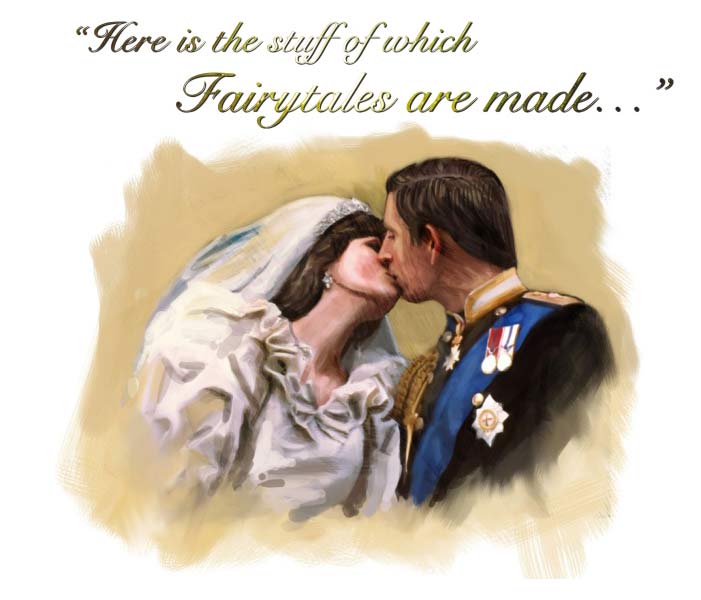
“Here is the stuff of which Fairytales are made…”
At the young age of 20, Diana became the Princess of Wales. From the day Charles proposed to Diana, to the moment she was getting down the glass carriage, England and the world was only talking about Diana. Her face was printed everywhere. Diana was the centre of the world’s attention and they were overjoyed to see her. On the D-day, 6,00,000 people lined the streets of London to catch a glimpse of their princess. 750 million people from 70 countries were glued to their television sets to watch the broadcast of every step that she would be taking towards her royal life. A national holiday was declared on 29th July, 1981, in United Kingdom to mark the joyous occasion. A congregation of around 3500 people, which included dignitaries from all around the world, graced the event and attended the royal nuptials held at St. Paul’s Cathedral, an iconic structure in London’s heritage.
Diana’s procession began from the Clarence House. The glass carriage arrived at the steps of St. Paul’s Cathedral. Her father accompanied her in the carriage. Earl Spencer had just suffered a heart attack, but made sure he was there to walk his daughter down the aisle on her big day. Diana stepped out of her carriage and charmed the world with her beauty. In that singular moment, Diana owned the hearts of a million people. The men fell in love with her and the women wanted to be like her.
Diana wore a puff sleeved, lace, high neckline dress. The ‘Elizabeth and David Emanuel’ dress was intricately designed with hand embroidery and sequined to equal the grace and elegance Diana had. Great precautions were undertaken to keep the information about the dress a secret. The dress boasted of a 25 foot long train. The designers did not take into consideration the size of the carriage, and because of the dress being quite big, the journey was difficult for her father who was travelling in the carriage with her. As she stepped out of the carriage, the dress though crumpled, still had heads turn in awe. Diana wore the heirloom Spencer tiara. It was not surprising, that Diana’s wedding dress and her look became a rage and influenced the style and fashion of that time.
With the band playing in the background, Diana slowly travelled the three and a half minute walk up to the altar holding her father’s arm. The ceremony was performed in a traditional Church of England service by the Archbishop of Canterbury, Dr Robert Runice, who described the occasion as, “Here is the stuff of which fairytales are made.” It was indeed a fairytale. Diana’s fairytale. A fairytale which made an ordinary Diana, the princess of the people.
After the wedding ceremony was concluded, Diana and Charles drove back to Buckingham Palace in an open top state landau, waving at the cheering crowds.
Driving back to Buckingham Palace, Diana was now the third most important woman in United Kingdom. She was the senior most after Queen Elizabeth II and the Queen Mother. She was now to be called, “Her royal Highness the Princess of Wales” . She also bore the titles ‘Duchess of Cornwall’, ‘Duchess of Rothesay’, ‘Countess of Chester’ and ‘Baroness of Renfrew’.
After the royal nuptial, a reception ceremony was held at the Buckingham Palace for around 120 guests. The royal couple then greeted the crowds who were waiting outside to catch a glimpse of the newlyweds. Charles and Diana kissed in the balcony for the cheering crowd. That moment was a first in royal history. After the royal wedding, Diana and Charles then headed for their honeymoon on an eleven day cruise to the Mediterranean. They hopped on the royal yacht Britannia and travelled across, visiting Tunisia, Sardinia, Greece and Egypt.
While on her honeymoon, Diana suffered from bulimia, the roots of which were sown in her childhood and then triggered by the stress, pressures and doubts about her marriage. She spoke of an incident of one evening when she and Charles were opening their diaries to check over the various appointments and schedules and out came two pictures of Camilla. She also mentioned of an episode when they were preparing to go for a dinner with President Sadaf, and he (Charles) was wearing cuff links with the alphabet ‘C’ embossed on them, and she at that very minute knew it what it meant. She confronted Charles if Camilla sent them. Charles replied saying, “what is wrong with that? They are a present from a friend.” Diana admitted at that time to feel maddening jealousy.
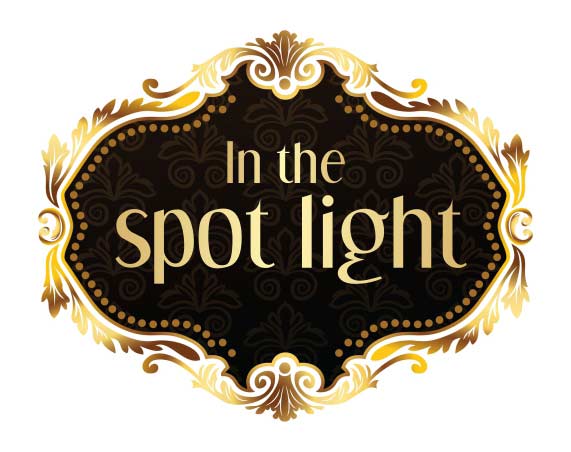
In the spot light
The royal life of the Princess had now begun. In the first year itself, the royal couple had 170 official engagements. Diana was a very shy and reserved individual, so for the first couple of months she beautifully snuggled on her husband’s arm. The young nine year old Diana, who had agreed to perform on stage in a school play, only if she did not have to speak, was now to take centre stage and speak in front of the world. Endless interviews and public appearances, numerous handshakes, round the clock travelling, posing for thousands of photographers, Diana was now performing the duties and fulfilling her responsibilities as the Princess of Wales.
On November 5, 1981, approximately three months into their marriage, it was officially announced that Diana was expecting her first child. During this pregnancy the couple decided to head for a holiday to Bahamas. The press followed Diana’s every move. She was always surrounded by sixty to ninety photographers trying to capture images of her. The press photographed Charles and Diana (in a bikini) on a beach during her pregnancy. The photograph created quite a stir in the 1980’s, especially because the image was of a member of the royal family. The photograph was considered intrusive and ‘crossing the boundaries of privacy’. The queen called it the blackest day in the history of British Journalism. Diana was distressed with the behaviour of the media towards her. She was quoted saying, “I had a very bad time with the press, and they literally either haunted me or hunted me.”
On 21st June, 1982, Diana gave birth to their son, William Arthur Philip Louis, popularly known as Prince William, nicknamed Wills. At the age of 20, Diana had fulfilled her foremost duty as the queen to be. The royal family now had a heir to carry on the legacy. Prince William was second in line to be heir to the throne after his father. When visiting her grandchild, the ecstatic queen very humorously said, “Thank goodness he hasn’t got ears like his father.” Diana was very much in love with the idea of being a mother and smothered William with care and affection. Diana always attempted for William to lead a life as ordinary and normal as possible. Diana wanted him to see the other facet of the world which was not about royalty, but the ordinary people of the streets.
Diana’s lurking insecurity of Prince Charles’ relationship with Camilla Parker Bowles did not soothe even after the birth of Prince William. Diana was completely shattered when she overheard her husband on the phone saying, “whatever happens I will always love you.”
Diana encountered numerous difficulties being Princess of Wales. She felt the pressure, but there was no one to help her get through it. Diana was in the media spot light. The people and the photographers were focusing all their attention on Diana and she felt all this very daunting and appalling.
The couple’s royal engagements now received the divided attention of the media. While performing his royal duties, Charles was habituated to being the centre of the media attention, but after their marriage, the focus shifted from him to his wife Diana. Charles was being side-lined. A feeling he was not used to receiving from the press. The attention Diana received from the world resulted in Charles getting slightly drifted away from her.
In the March of 1983, the royal couple embarked on a six weeks visit to Australia and New Zealand. Though she was advised against travelling with William, Diana paid no heed and stuck to her decision. This decision was later lauded by both, the advisors and the critics. By this time, the relationship between Princess Diana and Prince Charles was beginning to undergo a fair share of stress and strain. Such was her dilemma that in 1983, Diana admitted to Brian Peckford, the then Premier (Minister) of Newfoundland, a former British colony, that she was finding it difficult to cope with the pressures of being the Princess of Wales, but she was learning to manage.
Two years after the birth of William, Diana conceived her second child. Charles was hoping for the child to be a girl, but Diana was aware that the sex of the child was male.
However, she did not share this information with anyone, not even Prince Charles. On September 15th, 1984, at the age of 23, she gave birth to Prince Henry Charles Albert David, popularly known as Prince Harry. The birth of Prince Harry brought around the saying, “the Heir and the Spare.” Diana later admitted that during the pregnancy of the second child, she and Charles were the closest ever in their marriage. She mentioned, Charles was not supremely happy to receive the knowledge that Diana had given birth to a boy. Secondly, he remarked about the boy having red hair, which was a ‘Spencer’ family trait. On hearing these words, she told her friends, “Something inside me died.” For Diana, that was the moment when all hopes about her marriage ended.
On the other hand, the media began to notice the problems between the royal couple. Different people cited different reasons for their growing estrangement. People began to speculate, stating it to be the twelve years age difference, their varied interests; some stated it to be Charles’ attention to Camilla Parker Bowles, his former lover and the woman he had intended to marry. Through the 1980’s, Charles and Diana carried out their duties and royal engagements, but differences were prevalent. Nonetheless, they kept the façade. Charles was said to have returned to his former lover Camilla Parker Bowles and Diana was involved in an affair with a Captain James Hewitt. Diana had met Hewitt at a party in 1986, and had arranged for him to give her riding lessons. There were also rumours of Prince Harry being the son of James Hewitt, but the gossips were panned saying the affair between Diana and Hewitt began after Harry was born.
The couple’s public life was entwined but privately, they were leading separate lives. The relationship was turning turbulent and cold with time, but the couple still maintained their public appearances and in April 1986, they visited Vancouver for the opening of the Expo 86. The troubled times had triggered something within Diana. She suffered from ‘Bulimia nervosa’ during that tour. She would eat something and after a while her body would be unable to hold it. Due to this, while attending to the royal appointments she fainted. According to Diana, Charles was cold about the incident and uncaringly told her that she could have at least fainted somewhere in private. His callous and insensitive attitude towards her kept pushing Diana further into the grip of depression and bulimia.
Leaving aside her stressful marriage, in the mid 1980’s, Diana became actively involved with a number of charitable causes. As a part of the royal family and being Princess of Wales, Diana was expected to make various appearances at hospitals, educational institutions and others facilities, but she developed an interest in numerous causes outside the purview of the royal duties and interests. Diana supported 118 charities approximately. These charities demanded much of her time and Diana was pleased to work towards them and would travel around the world as part of her duty for her charitable organizations. Diana supported causes that had stark misconceptions attached to them at that time, such as AIDS and Leprosy. She said in an interview that she found herself getting more and more involved with individuals who were rejected by society, like drug addicts and people suffering from alcoholism. She added, “I found an affinity there.” In April 1987, Diana was photographed hugging an individual suffering from AIDS. The photograph displayed Diana’s sheer fearlessness and warmth. This photograph created quite a sensation and also helped dispel incorrect notions of AIDS being a disease transmitted through touch.
Her children meant the world to her and Diana always put them before any duties, engagements or royal arrangements. Even her critics agreed that Diana was a very devoted mother. She took very keen interest in the lives of her boys. She selected their first names, their schools and took them to school as often as her schedule permitted. She also planned her public duties and engagements to suit the timetable of the boys. Diana chose the nanny herself, dismissing the royal nanny. Diana’s affection was exemplified when in June 1991, Prince William was struck by a golf club accidentally. He suffered a skull fracture and Diana stayed by his bed in the hospital taking care of him, while Charles left to fulfill a prior engagement. Diana was praised and touted as the devoted mother while Charles’ decision attracted a lot of criticism.
As part of her royal tours and charitable engagements, Diana came to India in February 1992. Here, she went to meet Mother Teresa in Calcutta. She visited homeless shelters and shared her affections and concern for the people. She shared a very pristine bond with Mother Teresa. Diana said, “I am a very, very small Mother Teresa.” Mother Teresa shared a similar fondness for her and said, “Diana is my daughter.” An image of Diana, on her tour to India the same year, created quite a stir about her married life. Diana visited the Taj Mahal in February 1992.
The photograph of Diana sitting alone in front of the monument of love gave wind to the fire for the media speculating about her marriage. By the end of 1992, the couple could no longer keep the appearances. They carried on their duties together, but their married life had hit the rocks.
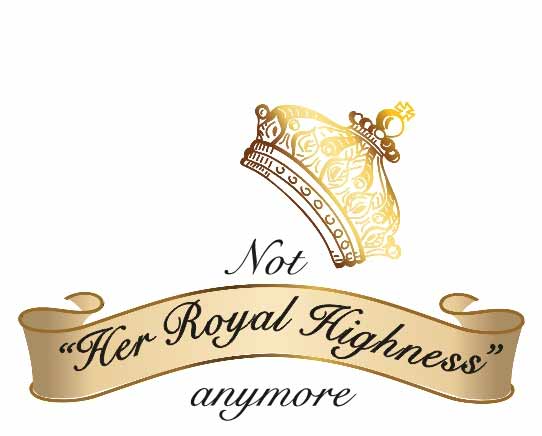
Not “Her Royal Highness” anymore
While Diana was quietly suffering a strained marriage, her ailing father died at the Wellington Hospital, London on 29th March, 1992. Earl Spencer was admitted a week before due to pneumonia. Charles and Diana, accompanied by their two sons, were in Austria at the time of his death. Diana and Prince William visited the Earl Spencer a day before they left. She was distraught as she had lost the first man of her life.
The same year, in June 1992, Andrew Morton’s biography, ‘Diana, Her True Story’ was published. The book shook the core of the royal family as it was based on the secret tapes which were said to be recorded by Diana in Kensington Palace in 1991. The book also included Diana’s close friends talking about incidents and details related to her life. The tapes were then released by NBC. The book revealed details about her unhappy married life, her depressions, the bulimia, and Charles’ affair with Camilla Parker Bowles.
The book created quite a row within the royal family. Diana however did not deny or approve anything in relation with the book. Diana mentioned that she had never spoken to Andrew Morton in person, but confirmed of her friends communicating with him. She said, it was the people close to her, who could notice the grief and distress she was undergoing and thought it was the supportive thing to help in the way they did. She added, that she allowed her friends to communicate with Andrew Morton, because she was ‘Desperate’.
In the secret tapes Diana mentioned, “The public side was very different from the private side.”She went on to say, “The public side, they wanted a fairy princess to come and touch them and everything will turn into gold and all their worries would be forgotten.” She added, “Little did they realize that the individual was crucifying herself inside because she didn’t think she was good enough.”
It was believed, that only when Diana felt that she was not receiving the care and support from the royal family and her husband, she thought of going to the public and decided to start taping her life episodes and publish them in a book. She hoped that the book would lessen her depression and insecurities. She hoped that the book would soothe the difficulties of her marriage and bring comfort to her life.
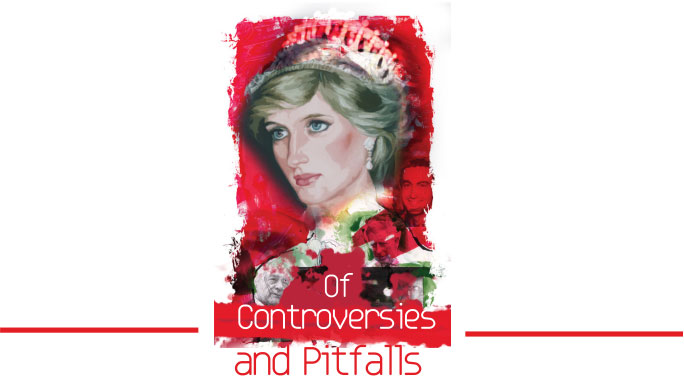
Of Controversies and Pitfalls
In the August of 1992, a telephone conversation between Diana and James Gilbey, the British actor surfaced. In the banter one could hear Gilbey calling Diana ‘Squidgy’. The tapes were later called the ‘Squidgy gate’. They included Gilbey telling Diana that he loved her. When interviewed about the same, Diana did not deny it, but affirmed by saying that James Gilbey was rather a very affectionate friend and that he always told people that he loved and cared for them. She also mentioned that the tapes were spread to dampen and sabotage her public image. After the taped telephone conversation of Diana and James Gilbey was revealed, a 1989 romantic conversation between Charles and Camilla Parker Bowles also found its way to the press. It was called the ‘Camilla gate’ tapes. With the tapes being exposed to the public, the differences between Charles and Diana were now evident to the people. The media speculations regarding the marriage of the Prince and Princess were rampant. By the end of year, the relationship had reached its culmination. On 9th December, 1992, the Prime Minister, John Major, announced in the House of Commons that the Prince and Princess of Wales had decided to separate.
Queen Elizabeth II deemed this year as her ‘Annus Horribilis’ meaning ‘year of horrors’. The queen considered it an awful year as she saw the breakdown of the marriage of her children, Prince Charles, Prince Andrew and her daughter, Anne Princess royal. In the year 1993, Diana could not handle the unbearable stress and was unable to give her 100 percent towards work. She decided to withdraw from the public eye and informed the people that she would be back soon. However, even after withdrawing from the media and public attention, Diana kept working for her causes in a small and invisible manner.
After Diana had her biography published, divulging details about her depressions and insecurities, it was Prince Charles who came out with discussing his side of the story. He confessed on Jonathan Dimbleby’s Television Documentary in June 1994, ‘Charles: The Private Man, The Public Role’, of committing adultery. When Charles was asked if he had been faithful to Diana, he replied, “Yes, absolutely” and then added, “until it became irretrievably broken down, us both having tried.” In the same year, Dimbleby’s biography, the“Prince of Wales” was also published. The book was written with the co-operation of Charles. The book included minutiae about his marriage, Camilla Parker Bowles and the details about their relationship since 1972. The book also mentioned that Charles had married Diana to please his father Prince Philip.
The same year, another book on Princess Diana was published. The book was called ‘Princess in love’ and was written by Anna Pasternak. The book described the relationship between Princess Diana and Captain James Hewitt from the year 1986 to 1991. It was revealed that James Hewitt had sold their story and hired Anna to write the book. In an interview, Diana said it did include facts, but a lot of it was false. Diana felt betrayed when the book was published as she felt that a good friend, whom she trusted, had simply used her to mint money.
By 1994, Diana started feeling terribly vulnerable and lonely. She was looking for a figure in her life who could care and protect her. It was while visiting a friend in the hospital that Diana met cardiologist Dr. Hasnat Khan. Diana was charmed by him and was soon seen frequenting the royal Brompton Hospital, visiting and interacting with patients. Hasnat Khan was a shy and quiet individual and belonged to a well-educated conservative family of Pakistan. He did not like the media attention. He was aware that Diana was the Princess of Wales and the mother of the future king of England and media attention was part of her life. The two enjoyed each other’s company and were said to visit various restaurants and drive around the city. Diana travelled to Pakistan in 1996 and even met with Hasnat’s family on one of her tours. Diana hoped for their relationship to end in a happy marriage. He on the other hand, found Diana’s life and media attention overwhelming and was not prepared to stand up to the task and the baggage that Diana carried with her. The relationship thus ended, leaving Diana lonelier than ever.
In the November of 1995, Diana agreed to BBC’s panorama interview with Martin Bashir. In that interview, Diana brought forward her encounters with bulimia.
She recalled how in circumstances she would fill her stomach to derive a feeling of comfort, but the feeling would be only temporary. Slowly, she would feel bloated and then vomit the food. She described the destructive pattern of bulimia remaining in her life for a number of years. According to her, bulimia was also a sign of her calling for help. She added, her bulimia was then used against her and said to be the problem for the distressed marriage between Charles and herself. For Diana, bulimia was an escape mechanism that according to her, worked in her favour to relieve stress.
When the interviewer asked Diana about her knowledge of Charles’s renewed interest in Camilla Parker Bowles in 1986, she said she was aware but wasn’t in a position to do anything about it. She said she knew it because of her woman’s instinct. When asked if Camilla Parker Bowles was the reason for the failure of the marriage, Diana said, “there were three of us in this marriage, and it got a little crowded.”
During the interview, Diana also accepted trying to injure herself. She felt, the action was a mere cry when no one listened. She added, “You have so much pain inside yourself that you try and hurt yourself on the outside because you want help, but it’s the wrong help you’re asking for. But I was actually crying out because I wanted to get better in order to go forward and continue my duty and my role as a wife, mother and Princess of Wales. So yes, I did inflict pain upon myself. I didn’t like myself. I was ashamed because I couldn’t cope with the pressures.”
In the panorama interview, Diana admitted of being involved in a relationship with James Hewitt. She accepted of being unfaithful to her marriage and said she adored him. She said she was in love with him and felt betrayed when the book, ‘Princess in Love’ was published. With the interview, Diana wanted to clear the air about the rumours and misconceptions about her. She felt the closest to the public and wanted them to know her thoughts and experiences. She was said to manipulate the media to her advantage. Her situation with the media was that of ‘give and take’. The media flouted the norms of her private life, but also provided her the platform to interact and bring forth to the people what she wanted to say. The media allowed her to find support in the people when she couldn’t find any with the family. Diana was also said to have used the media as retaliation to the royal family.
It had been three years since the couple separated. The growing differences and the public reprisals forced the queen to ask the couple for an early divorce in December 1995. On 28th August, 1996, Charles and Diana got officially divorced.
Diana was 35 when the marriage officially ended. The custody of the children was to be shared between Charles and Diana. She lived in the apartment at Kensington Palace and received a thirty million dollar settlement after the divorce. She had the permission to keep the title of “Princess” but could no longer be called, “Your royal Highness.”
Diana was most concerned about the effects of the broken marriage on her boys. She came from a family with the same background and knew the repercussions and impact that the news would have on the children. So, a week before the news went public, Diana went personally to William’s school to inform him.
Even after the divorce, the media’s attention did not diminish towards Diana. She was still hounded by the media and they became difficult to control as she was not a royal family member anymore. As Charles and Diana were sharing custody, on days when her sons were to be with her, Diana struggled to protect the privacy of herself and her children. On the other hand, the children felt comfortable sharing personal moments with Charles as the media and photographs were being monitored and controlled. The children lived two separate lives, one, with Diana, who showed them the normal and ordinary aspect of living by taking them to ski or visit amusement parks etc.,and second, with their father, which entailed them to indulge in all the royal luxuries. Diana was aware that William was going to be the future face of the monarchy. She wanted to raise her boys to be humble. Diana knew very well that she was the mother of a future king and therefore, she wanted to raise William to know his people, the people of England. She would make him accompany her to homeless shelters, hospitals and other facilities to show him the realities of the world. Diana wanted to influence William’s life in such a way that he could change and help the lives of his people.
The divorce did not slow down Diana. She still worked for the causes she believed in. She continued her activities in philanthropy and worked with no political agendas.
The number of charities she supported decreased from over a hundred to only six. She spoke about working with the people. She believed and led with her heart and not the head. Diana received the ‘Humanitarian’ award in 1996 for her support to charitable causes and the sheer affection and warmth she spread. She kept supporting and educating people about AIDS and Cancer. In January 1997, she decided to work with Red Cross, campaigning to have a world free of landmines. She travelled to Angola to launch her campaign against landmines. Diana knew she could steer people’s attention towards important issues and create awareness. Diana instinctively knew that supporting the campaign against landmines would bring a significant amount of exposure and coverage. She knew that her presence would accelerate the process and help the cause. The image of Diana walking through a partially unexploded landmine field brought the campaign to the forefront. Diana was also aware of the public wanting to have a piece of her, so, on 25th June, 1997, she allowed seventy-nine of her gowns to be auctioned at the Christie’s auction house in New York. This step raised $4.5 million, which was then allocated to the AIDS and Cancer research projects respectively.
The same year, Diana got involved with Dodi Al Fayed. He was an Egyptian film producer and also the son of Mohammed Al Fayed, owner of the famous Harrod’s department store and the Ritz Hotel, Paris. Mohammed Al Fayed was a family friend of Diana. He invited her and the boys for a holiday in Saint Tropez. Diana accepted the invitation and along with William and Harry, flew there to spend some quality time.
The three spent a wonderful time on the beach, jet skiing, bonding and connecting with each other. It was during this holiday that Diana met with Dodi. A connection began to grow between the two. He then invited her on a weekend trip to Paris. The 42 year old Dodi showered Diana with gifts and attention. Pictures of Diana from that period displayed a woman who was confident and happy. In July the same year, Diana was photographed with Dodi Al Fayed aboard his father’s yacht on the French Riviera. By early August, the press learnt about the growing closeness between the two and relentlessly chased and followed them.

Tragedy strikes
In August 1997, Diana went to Bosnia to campaign against landmines. The press received information that Diana was then heading to Paris. It was learnt that she was staying at the Ritz Hotel. In the evening, as Diana was leaving for an engagement pre-arranged by Dodi, the media frenzy outside the hotel became irrepressible. To reduce all this commotion, news was cited that Dodi and Diana would not be leaving the hotel as they had settled for the night. But around 12.20 am, Dodi and Diana walked out of the hotel’s back entrance trying to escape the media. At 12.23 a.m. Diana met with a fatal car accident along with Dodi Al Fayed, Dodi’s Bodyguard, Trevor Rees-Jones and the acting security manager of the Ritz Hotel, Henri Paul. The accident occurred on the 13th pillar of the Pont de l’Alma road tunnel, while the couple was trying to dodge the eyes of the paparazzi.
Henri Paul, the driver was declared dead when he was removed from the wreckage. Trevor Rees-Jones survived, but was severely injured. It was said that none of the occupants of the car were wearing seat belts, except for Rees-Jones. Dodi Al Fayed was removed alive from the wreckage of the crash but after several attempts to resuscitate him, he was declared dead at 1:32 a.m. Diana was still conscious and was rushed to receive treatment. A reporter who had seen Diana immediately after the crash described that she was bleeding from the nose and ears and her head was rested against the back of the front passenger seat. The doctors stated that she had suffered severe internal injuries and she finally succumbed to them at 4 a.m. After almost an hour and half, at 5.30 a.m. the doctors announced her death at a press conference.
The accident was speculated to have occurred as the couple was travelling at a very high speed trying to elude from the press. Seven press photographers were indicted for the accident. Later, it was concluded that the accident was caused as the driver, Henri Paul, was under the influence of alcohol and had lost control of the vehicle.
Many startling theories and rumours made rounds after Diana’s death on 31st August, 1997. Theories which hinted at Diana being killed by the royal family as she was a “Loose Canon” and could cause harm to the repute of the royal throne. Ten months before her death, Diana had written a letter voicing her doubts regarding her existence and safety. She believed that her life was in peril and that there was a conspiracy being staged to kill her in a car accident. The Daily Mirror published the letter in 2003 which stated, “This particular phase in my life is the most dangerous.” She added “my husband is planning ‘an accident’ in my car, brake failure and serious head injury in order to make the path clear for Charles to marry.” Diana understood that she was becoming a threat and was going to face an ill-fated death.
Dodi’s father, Mohammad Al Fayed also believed the same and is still working towards finding out the real cause of their death. On his website, ‘Alfayed.com’, he states, that people who loved Diana would have loved Dodi too if they’d had the chance to know him and that, they deserve to know the whole truth. A lot of investigations were undertaken into the death of Princess Diana and Dodi al Fayed. The inquests were finally summed up on 7th April, 2008, when the jury decided that Diana’s death was caused by negligent driving by the chauffer Henri Paul.

“Goodbye England’s Rose”
The effervescent 36 year old Diana met with her end in a very tragic manner. Her death was met with indefinable grief and sorrow around the world. Her funeral was held on 6th September, 1997, in Westminster Abbey and drew approximately three million mourners. 2.5 billion people watched her funeral worldwide. The queen was at her summer residence, Balmoral Castle in Scotland, during the event of Diana’s death. The royal family’s reaction of not mourning publicly received great flak from the people. There was a lot of resentment amongst the masses over the flag being flown over Buckingham Palace. As per the norms, the flag is supposed to be hoisted only if the queen is in residence, and since at the time of Diana’s death the queen was in Scotland, there arose a massive public outcry with the newspaper headlines asking and quoting, “Where is our Queen? Where is her flag?” The public pressure became so enormous that the queen had to make an announcement that the Union Jack would fly at half-mast at the Buckingham Palace.
Millions of mourners lined the four mile stretch from Kensington Palace to Westminster Abbey. Good friends, George Michael and Elton John attended the funeral. Elton John brought tears to the eyes whilst he sang the rewritten version of ‘Candle in the wind’, dedicated to Diana. He referred to her as England’s Rose. On her coffin, a letter from her younger son Harry was displayed, which read “Mummy.” Diana’s brother, the Earl of Spencer, in his speech, severely criticized the press for their behaviour towards her. After the service, her coffin was driven to Althorp, where she was buried on the Althorp Estate. Millions of flower bouquets were sent by mourners outside Kensington Palace. People stood in line for days to sign the book of condolence outside St. James Palace. This was their way of saying their final good bye to the princess they had adored and loved. Diana’s life was full of conspiracy and turbulence, but what she always wanted to share with the world was love.
Due to her support to the ‘International Campaign to Ban Landmines’, the cause received significant exposure and coverage. The cause then received the ‘Nobel peace prize’ in December 1997, a few months after her death. Diana was the most photographed woman of the 20th century and is still remembered through the work for her charities, her affectionate hug to the individual suffering from AIDS, her work on the campaign against landmines, the many beautiful images of her clicked by the paparazzi, her moments with her sons, the broadcast of her wedding that was no less than a fairytale and her sudden death which brought the world to tears. She lives in the upbringing she gave her children.
Diana once said to William, “if you find someone you love in life you must hang on to it and look after it, and if you are lucky enough to find someone who loves you then one must protect it.” Diana was not just a celebrity. She worked for what she believed in. She was not just a part of the royal family. She transcended her royal image to create a charming persona in the minds of the people. And even after fourteen years of her death, she still reigns. She was truly ‘The people’s Princess’.
Next Biography





